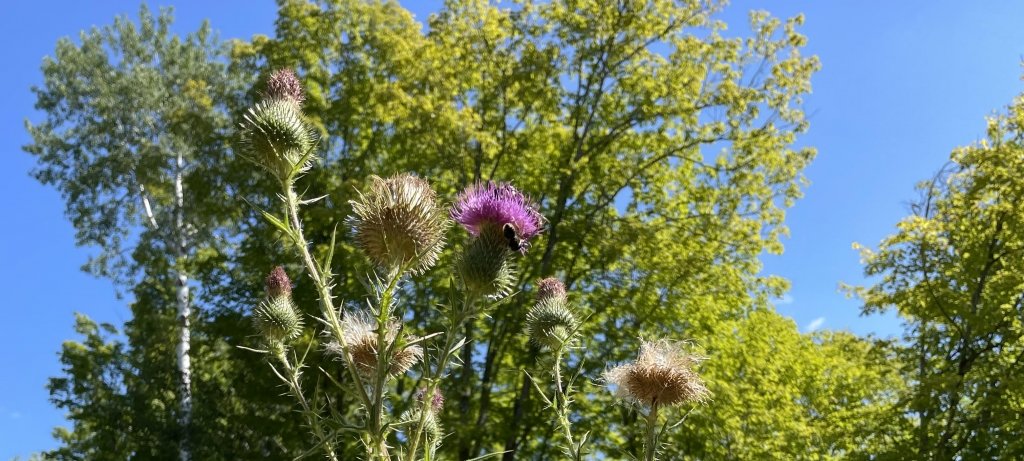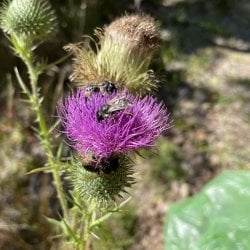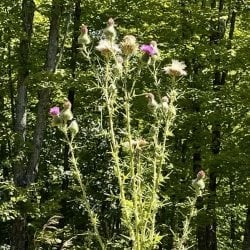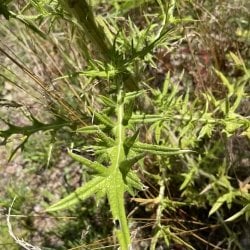Bull thistle flower
Image credit: Sigrid Resh

Bull thistle flower
Image credit: Sigrid Resh
Bull thistle, a member of the Asteraceae family, is yet another herbaceous biennial on our list of invasives. Unfortunately, bull thistle can flourish in an array of sites ranging from meadows, forests, roadsides, ditches, and most disturbed sites. Identifying features include:
Like other thistles, bull thistle is armed with a great number of spines that can and will penetrate exposed skin.
For more information visit the Midwest Invasive Species Information Network (MISIN).

Purple bull thistle flower being pollinated
Image credit: Sigrid Resh

Bull thistle foliage
Image credit: Sigrid Resh

Bull thistle basal rosette
Image credit: Sigrid Resh
A common invasive found throughout the continental United States, bull thistle poses many ecological threats such as reducing quality wildlife forage and the loss of species diversity. Like many other biennial invasives, bull thistle is able to produce a large seed bank that can remain viable for up to 10 years! As a result, the plant can easily spread and form dense stands in disturbed sites. See the following steps for proper bull thistle management.
Note: Like many other invasives, early detection and management of small populations is key to bull thistle control. Because of the plant’s ability to produce a large seed bank, complete eradication will require several years of continued management and monitoring. Furthermore, management practices which target the plant's roots, such as hand pulling, are preferred, but not necessary as bull thistle can only reproduce through seed production via its flowers.
If you do happen to remove bull thistle on your property, it is always a good idea to plant some natives in its absence! Since bull thistle prefers an array of disturbed sites, it would be best to use natives that also grow well in these conditions. A few great options would be native goldenrods (Solidago spp.), sunflowers (Helianthus spp.), wild lupine (Lupinus perennis), swamp milkweed (Asclepias incarnata), native marsh thistle (Cirsium muticum), and native asters (Asteraceae family). In addition to promoting wildlife diversity, these species also grow well in meadows, field edges, and forest edges.